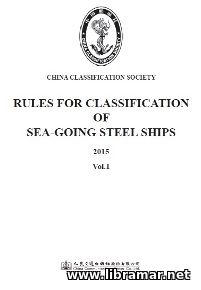 The official release of the China Register-issued Rules covering the classification of the sea going ships. The set consists of nine separate volumes. The first volume contains the general provisions for classification while the second one is devoted to the ship's hull including hull structure, equipment and outfitting, ice strengthening, single- and double hull oil tankers, bulk carriers and container vessels, ro-ro and passenger vessels, tugs and OSVs, floating cranes and barges, ore carriers, semi-submersibles, dredgers, work barges etc.
The part three provides the requirements for the shipboard machinery installations while part four is dealing with the refrigerated cargo installations. The rest of the rulebooks are covering the electrical installations on board, shipboard automation systems, fire protection, fire detection and fire extinction arrangements and equipment, CSR for oil tankers and bulk carriers, and additional requirements.
The amendments to the Rules are contained in a separate document. The Rules set is a must have on the yards engaged in construction of the vessels classed with the CCS. Apart from that, since the requirements and information contained in these volumes may be generally applied to all vessels, we would recommend them for familiarization to all people involved in new construction.
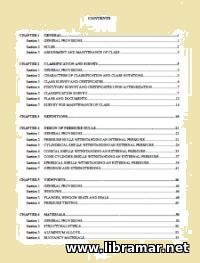 The latest official release of the CCS issued rules applicable to construction and classification of the diving systems and submersibles. The content of the rulebook has been developed by the recognized experts in the field and shall be used for handling relevant classification activities and for providing safe, reliable and reasonable class standards for the above mentioned items with the ultimate intention to meet the associated demand in such areas as the marine exploitation and ship construction, as well as related manufacturing industries plus marine insurance.
The material of the book is divided in sixteen chapters. The first three chapters are mainly introductory and provide general provisions, information about classification and survey works, plans and documentation involved, and definitions used. The next chapters is devoted to the design of the pressure hulls while the following three are dealing with the viewports, materials used for construction and manufacture process itself.
The remaining chapters address the life support systems, machinery and equipment, piping and electrical installations, communication and navigation equipment, stability and buoyancy, handling systems, fire protection and firefighting arrangements, plus some additional requirements.
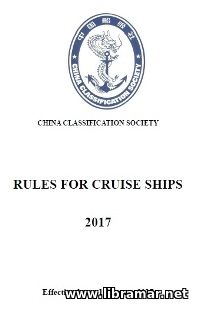 The latest release of the China Register Rules to be applied to the cruise ships classed with CCS. Starting with the general provisions and description of the relevant class notations, the rulebook then moves to the chapter dealing with the hull structures including longitudinal strength and scantlings, direct calculation of the local and overall strength, fatigue, ultimate and residual strength.
The third chapter is covering fire safety of the ships including requirements for the spaces featuring special structure, and alternative design and arrangements. The other chapters of the document cover noise and vibration, lifesaving arrangements, passenger occupation, ship stability, leisure facilities available on board, sanitation ensurance etc. Some additional information is contained in the appendices.
Note that there is one more rulebook included in the set and providing guidelines for the survey of the air conditioning systems installed on board cruise vessels. The document will present interest to the people involved in the design and construction of the cruise ships under CCS class since it contains all relevant requirements to be taken into consideration.
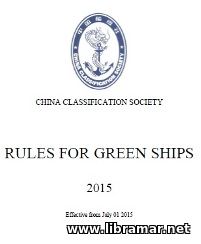 The present CCS Rulebook applicable to the green ships was released with the intention to advocate the development and subsequent application of the green technologies as well as to facilitate the promotion of the structural optimization/upgrading of ship construction, shipping industry, implementation of the effective technologies and using proper management measures to both newly delivered and existing vessels to increase the green grade.
This, when implemented in the operation of the fleets of shipping companies, would eventually result in achieving low consumption and emissions of the vessels, low pollution volumes and better working environment for the people on board. There are three main objectives of green ships, namely energy efficiency, protection of the environment, and improving working environment, and they are all covered in the first three chapters of this document, making part one providing requirements for the ships engaged in the international voyages.
The second part of the volume is dealing with the domestically operating ships. Appendices to the main content of the rulebook provide guidelines for calculation EEDI, development of the associated electric power tables, determining minimum propulsion power, verification of the basic design and tank test of power curves.
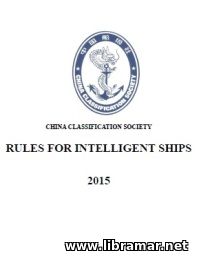 The present Rules have been developed to apply to the CCS-classed vessels with the "Intelligent Ship" classification notation requested. The term intelligentization is referred to as numerous applications that are considered specific to certain objects integrated through modern communication as well as IT, i.e. information technology, associated intelligent control and computer network technology.
These application would include not only the assessment and diagnosis, but also prediction and making of the relevant decisions. It is characterized by perception, memory and thinking, learning and self-adaptability, and finally, behavioral decision making.
The vessels dealt with in the pages of this volume automatically perceive/obtain the data and information and the vessel, logistics and marine environment, port etc. using the sensors and communication equipment, internet and all other available means to achieve desired intelligent operation concerning safe navigation and ship management, cargo transportation and technical maintenance, automation and data processing etc., with the ultimate goal to make vessel safer, more reliable, more efficient and environmentally friendly.
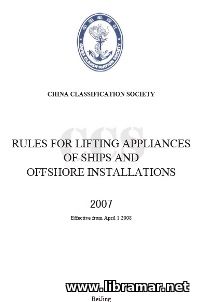 The Rules developed and published by China Register for the lifting appliances installed on bard vessels and offshore units. The provisions of the present rulebook shall apply to the derrick rigs/cranes, submersible handling systems, crew/passenger lifts, conventional cranes, cargo/vehicle lifts. The publication opens with the general information about the survey and certification system including plans and documentation.
The main part of the book is dealing with the derrick systems including calculations of the loads and conditions, shipboard and offshore lifts, cranes and ramps covering heavy lift cranes as well, relevant machinery and electrical installations - note that this sections also covers control engineering systems. The materials and welding have been paid particular attention together with the testing of the shipboard/offshore lifting appliances.
The last chapter of the volume addresses the marking of lifting gear and lifting machinery. There are four appendices to the main body of the document providing information on the critical stress normally experienced by the compressed construction members, derrick fittings, ILO 32 and ILO 152 ratification status, and forms of the register of lifting appliances issued to the CCS classed vessels.
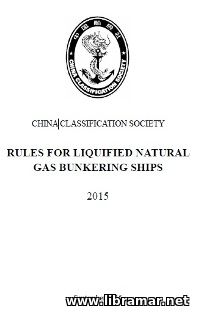 These China Register Rules have been published to apply to the vessels equipped with the LNG containment and bunkering system. The sea-going liquid natural gas bunkering vessel shall comply with all rule requirements. For the vessels featuring the function of bunkering the fuel oil with a flash point exceeding 60 degrees and LNG, the associated cargo areas shall be complying with the oil tanker requirements.
The design of the vessel, in turn, shall be fully compliant with the water environmental conditions and the operational conditions shall be duly reflected in the ship's safety operation manual. The materials used for construction of the gas tanks, equipment used for bunkering, piping and fitting, and any other part contacting LNG or the boil-off gas shall be suitable for the specified pressure and temperature.
In addition to the requirements listed in this rulebook, the materials shall also comply with all relevant requirements of the other rules. Seven chapters of this rule book are covering general provisions, the vessel's arrangements, cargo containment systems, bunkering systems, power installation, shipboard monitoring, alarm and safety systems, electric equipment and fire safety including protection and extinction arrangements.
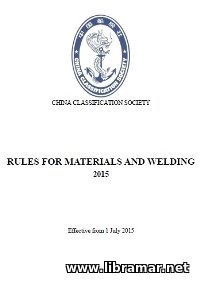 The China Register Rules for materials and welding commonly applied in construction and repair works. The content of the rulebook is arranged in three major parts. The first part is dealing with the metallic materials including general provisions, survey and testing requirements, material tests - tensile, impact, bend, z-direction tensile tests, ductility and others, steel plates, flat steel bars and sections, steel castings and forgings, tubes and pipes, aluminum alloys, iron castings, non -ferrous materials, shipboard equipment - anchors, chain cables, wire ropes, mooring chains etc.
The second part is covering non-metallic materials such as plastics and FRP, concrete, skirt materials, and fiber ropes. The last part of the book has been devoted to welding including welding consumables, approval of the procedures welding of ship hull structures, welder qualification tests, welding of various offshore structures, pressure shells, pressure pipes, submarine pipelines, and machinery components.
Particular attention has been paid to the welding and riveting of various non-ferrous materials such as aluminum and titanium alloys, marine copper and alloys. The archive includes two files with the amendments.
« 1 2 ... 6 7 8 9 10 ... 29 30 » |







